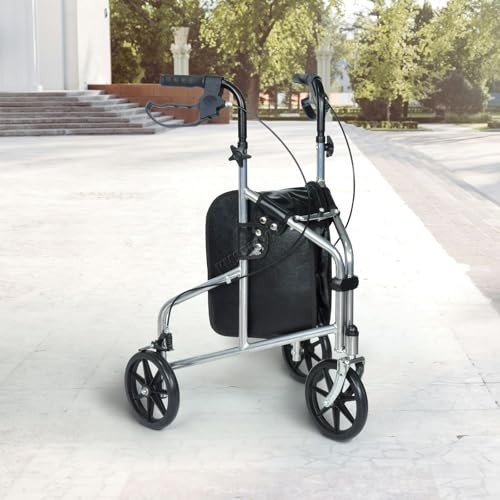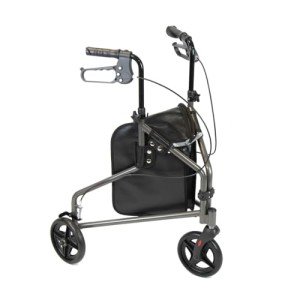This company has no active jobs
0 Review
Rate This Company ( No reviews yet )
About Us
What’s The Current Job Market For Walking Frame Professionals?
Understanding Walking Frames: Features, Benefits, and Considerations
Walking frames, likewise called walkers, are necessary mobility aids created to supply stability and support for people who may fight with balance, coordination, or strength when moving. These devices can significantly enhance the lifestyle for the elderly, people recuperating from surgical treatment, and those with persistent health conditions impacting mobility. This post will explore the numerous types of walking frames, their benefits, appropriate usage, and key considerations for users and caretakers.
Kinds Of Walking Frames
Walking frames can be found in a number of variations to accommodate different user requirements. The main types include:

-
Standard Walking Frames: These are basic freestanding frames that offer maximum stability. Users should lift the frame with each action, making them appropriate for people with excellent upper body strength.
-
Two-Wheeled Walkers: These frames have two front wheels, enabling smoother movement. They are perfect for users who can manage some weight-bearing and need less lifting.
-
Four-Wheeled Walkers (Rollators): Designed with 4 wheels, a seat, and hand brakes, rollators provide convenience and safety. Users can stroll without raising the frame, making them ideal for those with restricted endurance or strength.
-
Knee Walkers: These are designed for individuals recuperating from foot or ankle injuries. Users rest their knee on a padded cushion while pushing themselves forward with their other leg.
Table 1: Comparison of Walking Frame Types
| Walking Frame Type | Highlight | Best Suited For |
|---|---|---|
| Standard Walking Frame | No wheels; needs raising | Users with excellent upper body strength |
| Two-Wheeled Walker | Front wheels; much easier maneuvering | Users requiring moderate support |
| Four-Wheeled Walker | Wheels, seat, brakes | Users requiring stability and rest alternatives |
| Knee Walker | Padded knee rest; mobile | Users with lower leg injuries |
Benefits of Using Walking Frames
Walking frames provide various benefits that boost mobility and promote self-reliance. These benefits include:
-
Increased Stability: Walking frames provide a steady platform, decreasing the danger of falls.
-
Enhanced Confidence: By using support, users can feel more protected while walking, which boosts their self-confidence in mobility.
-
Flexible Use: Walking frames can be utilized inside and outdoors, accommodating various surface areas and environments.
-
Minimized Physical Strain: They ease the physical burden on the user’s legs and back, permitting people with pain or weakness to walk longer ranges.
-
Encouragement of Physical Activity: Regular use can promote mobility and aid maintain physical activity, which is important for total health.
Secret Considerations for Users and Caregivers
While walking frames provide significant benefits, there are several essential considerations to make sure ideal use:
-
Proper Fit: Walking frames must be gotten used to the appropriate height for the user. When standing straight, the elbows ought to be somewhat bent when holding the handles.
-
Weight Capacity: Each walker has a maximum weight limitation. Users should ensure they pick a walking frame that can adequately support their weight.
-
Surface Suitability: Users need to consider where they will primarily use the walker. Four-wheeled walkers are better suited for outdoor use on uneven surfaces.
-
Upkeep: Regular examine brakes, wheels, and structural stability are essential to make sure safety.
-
User Training: Proper training from health care professionals can help users and caregivers understand how to use walking frames safely and efficiently.
FAQs about Walking Frames
-
Who can take advantage of utilizing a walking frame?
- Individuals with balance problems, elderly people, those recuperating from surgery, and those with chronic mobility concerns can benefit from utilizing walking frames.
-
Can walking frames be used outdoors?
- Yes, lots of walking frames, particularly four-wheeled walkers, are developed for both indoor and outdoor use.
-
How do I choose the right walking frame?
- Consider your mobility needs, environment, weight capacity, and any extra functions like seats or storage compartments.
-
What should I do if I feel unstable utilizing a walking frame?

- Talk to a health care professional or physical therapist for assistance on appropriate usage and modification of the walking frame.
-
Are there any dangers connected with using a walking frame?
- If not utilized properly, walking frames may cause falls. It’s vital to ensure correct fit, adjust them properly, and practice safe walking methods.
Walking frames represent an important tool for increasing mobility and self-reliance for numerous individuals dealing with physical difficulties. By understanding the various types available, their benefits, and the factors to consider associated with their use, users and caretakers can make informed choices about picking and making use of the ideal walking frame. With the best support, lots of people can regain confidence in their mobility, enhance their quality of life, and take necessary actions toward self-reliance.

